The main characters of the War of the Scarlet and White Roses. Mothers of Kings: Catherine of Valois
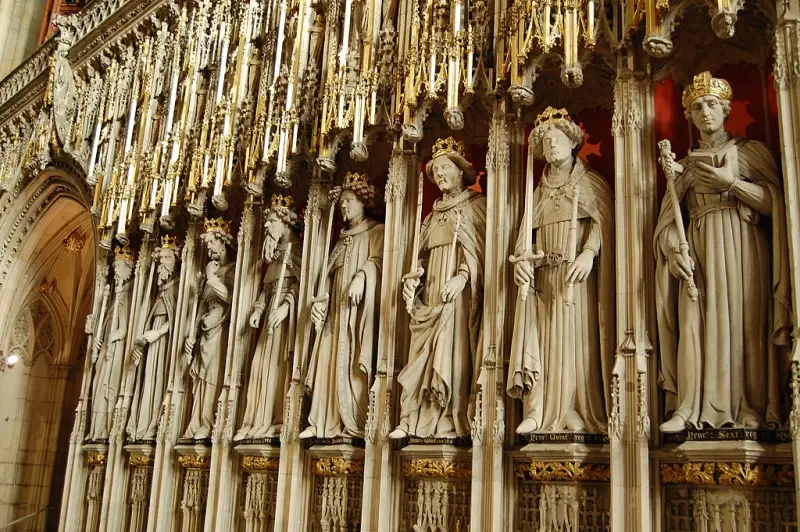
Statues of the kings of England in York Minster, from William the Conqueror to Henry VI
What is it for, since Henry is gone?
When a mother feeds a baby with tears,
The region will become a lake of salty tears,
And women alone will mourn the dead.
"Henry VI", William Shakespeare,
translation by E. Birukova.
History in faces. Today we are starting a new cycle of historical personalities related to the history of the Middle Ages. Many of the VO readers expressed wishes for the continuation of the “medieval theme”, and... why not continue it, if the ruler always has his own hand. Well, to begin with, we will choose the most dramatic and bloody era - the War of the Scarlet and White Roses.
At one time, on the VO website we had a series of articles about the battles of this time and the armor of the participants in the battles. Today our story will be about the people who became the cause and participants in this bloody war, which led to the establishment of absolutism in England.
Well, we’ll start from “the very beginning”: with the history of those women, without whom the whole of English history would have gone completely differently.
But first, let's think about this: about the stunning ingenuity of history, which leads people along its path in such confusing ways that all concepts of good and evil are erased, and with the best intentions, as it turns out many years later, the road to hell was paved. So it was and so it will be, and none of us can understand all these intricacies of Mother Fate, as well as foresee all the consequences of our actions, most often seemingly absolutely well-intentioned!
Chronologically, the War of the Scarlet and White Roses lasted (by the way, like the Hundred Years' War between France and England) for many years. In modern historical literature, the years of this conflict are usually given as 1455–1485. It’s just that isolated clashes related to the War of the Scarlet and White Roses occurred both before and after this time. Meanwhile, in fact, it itself can be completely divided into three periods: 1455–1464, 1469–1471 and 1483–1487.
Well, let's start with a story about women. For it is women who give birth to children, and then these children become the heirs of kings and begin to fight each other for their inheritance.
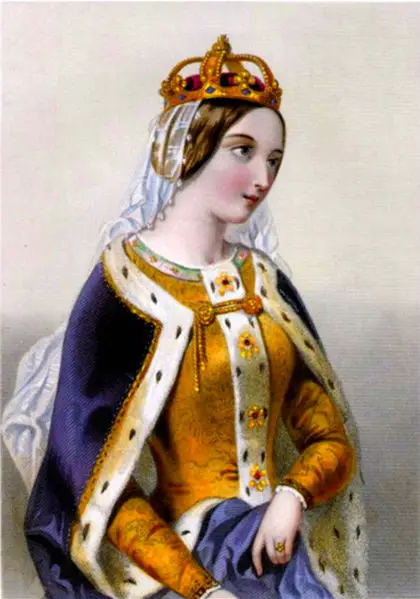
Catherine Valois. Original engraving from the 1875 published book The Queens of England or the Royal Book of Beauty (or the 1851 book Biographical Sketches of the Queens of England) edited by Mary Howitt
And the first among the noble ladies of interest to us will be Catherine of Valois (1401–1437) - the youngest daughter of the French king Charles VI and Isabella of Bavaria.
By our standards today, she lived a short life, but by the will of providence she became a participant in many important events for history. She was 14 years old, quite a suitable age for marriage at that time, when the French army suffered a heavy defeat from the British at the Battle of Agincourt.
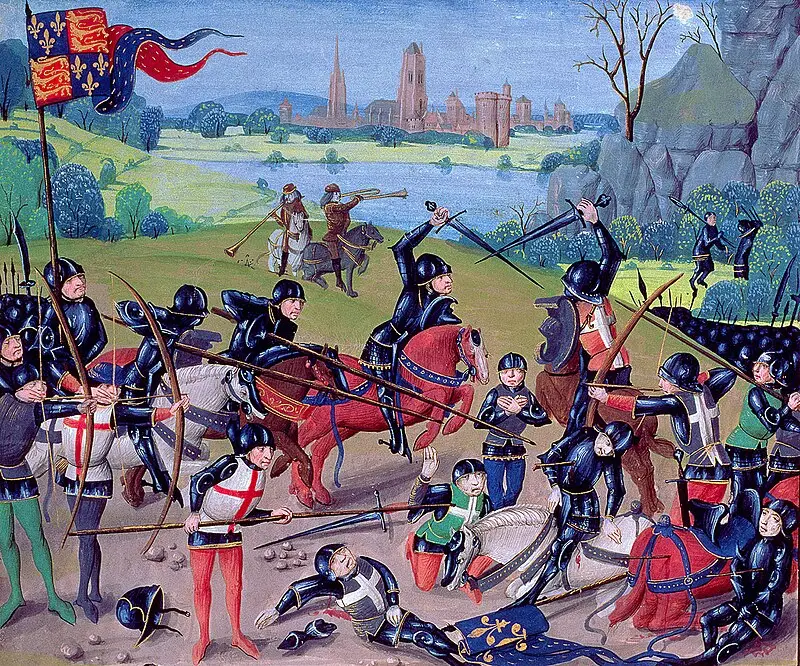
"Battle of Agincourt". Miniature from Thomas Walsingham's Chronicle of St. Alban, c. 1422 Lambeth Palace Library, London
A dynastic marriage between Catherine and King Henry V of England could ease the situation of the country and unite the defeated France and the victorious England under the rule of one king.
And so on June 2, 1419, she and her mother arrived in the city of Melun, where they met with King Henry. Her beauty made a strong impression on him, and she was indeed a very beautiful girl, so, in addition to political considerations, banal but eternal love also had its say here.
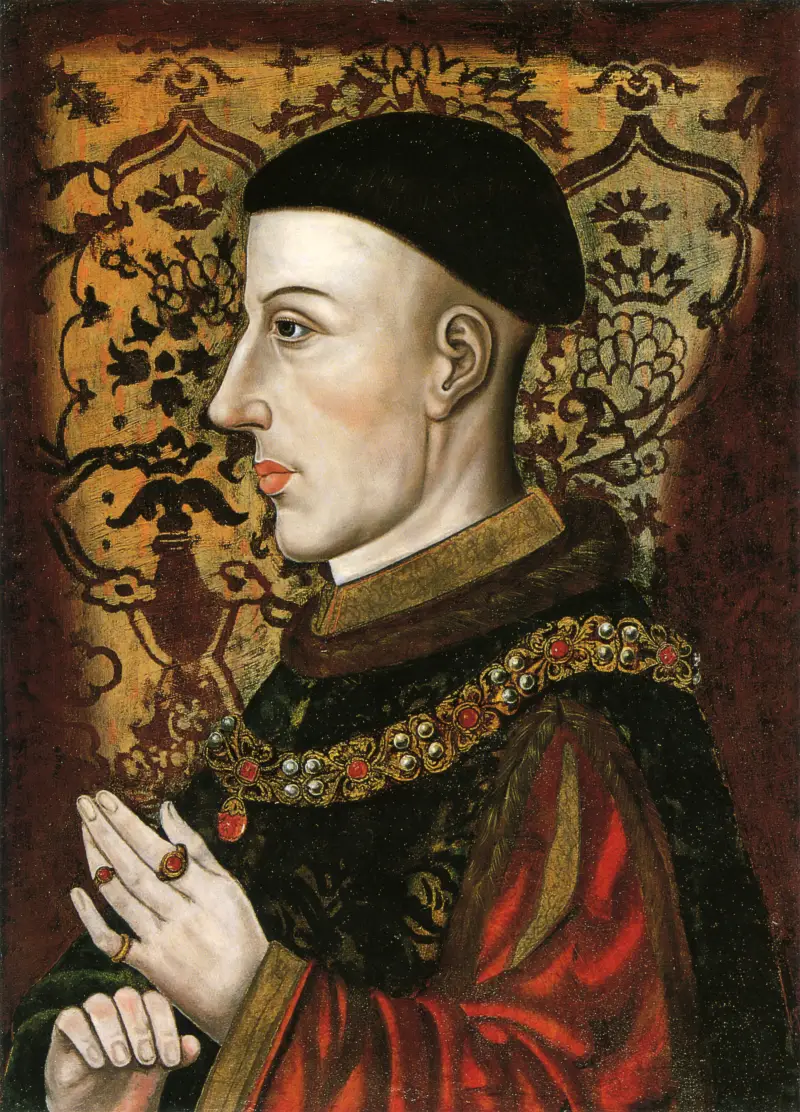
King of England Henry V. National Portrait Gallery. London
Lengthy negotiations followed, the result of which was the Treaty of Troyes, announced in its main cathedral on May 21, 1419. According to this agreement, the English king Henry V was declared the heir of the King of France, Charles VI the Mad, bypassing the legal heir to the throne of the future Charles VII, which meant both de facto and de jure the annexation of France to England and their merging into a single kingdom.
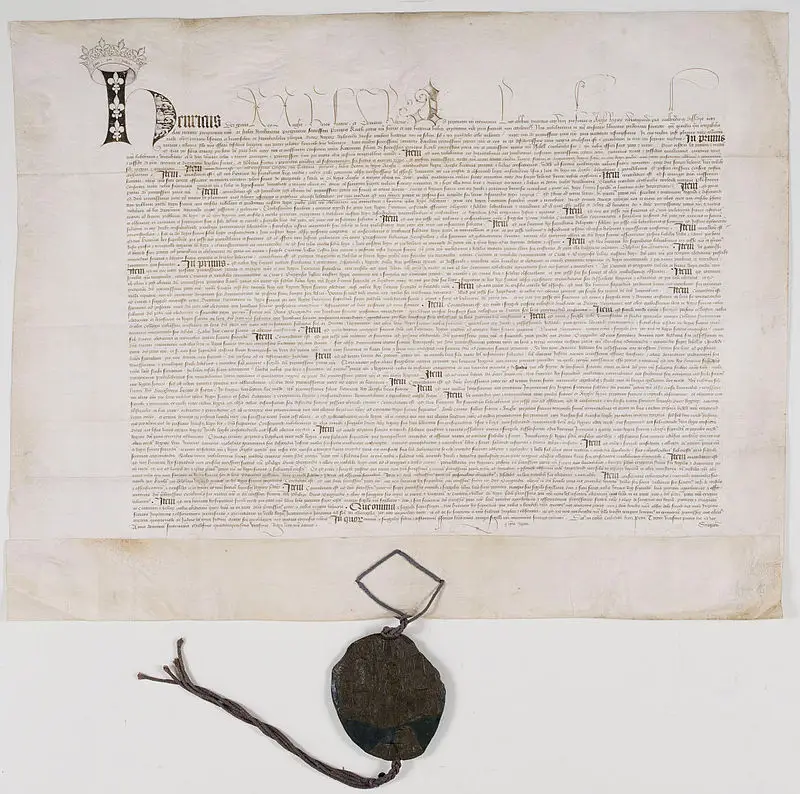
Text of the Treaty of Troyes. British National Archives, London
The Dauphin Charles was thus declared illegitimate, although none of the clauses of the agreement directly stated this.
It would be difficult for Henry V to wish for a more advantageous marriage. After all, England was supposed to receive 40 ecus every year as Catherine’s dowry. True, King Charles VI and Isabella of Bavaria retained their titles of king and queen until their deaths.
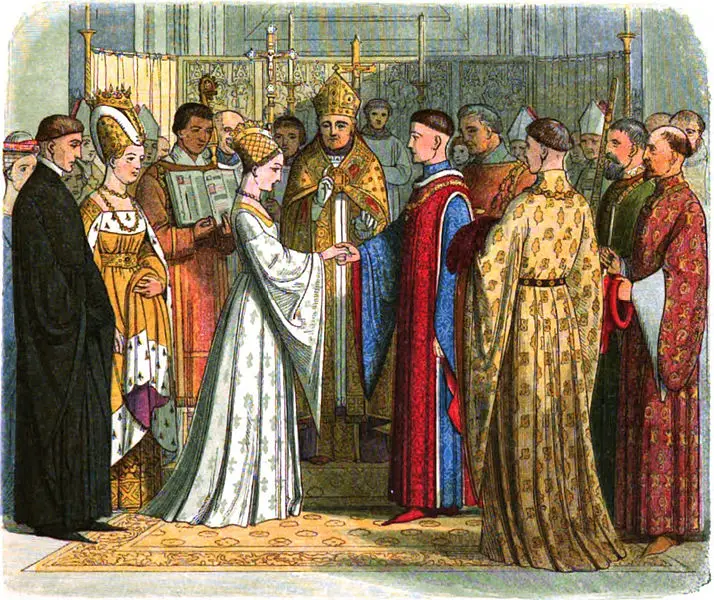
"Chronicles of England from 55 BC." e. to 1485”, page 373. “The marriage of Henry V and Catherine of France.” London. Longman. Roberts and Green. Artist James William Edmund Dole (1822–1892). British Library, London
On June 2, 1420, in the same Troyes, in the Church of St. John, King Henry and Catherine of Valois were solemnly united in holy marriage. Well, Henry organized her coronation later - on February 23, 1421, in Westminster Abbey and, as chroniclers note, he conducted it with great pomp.
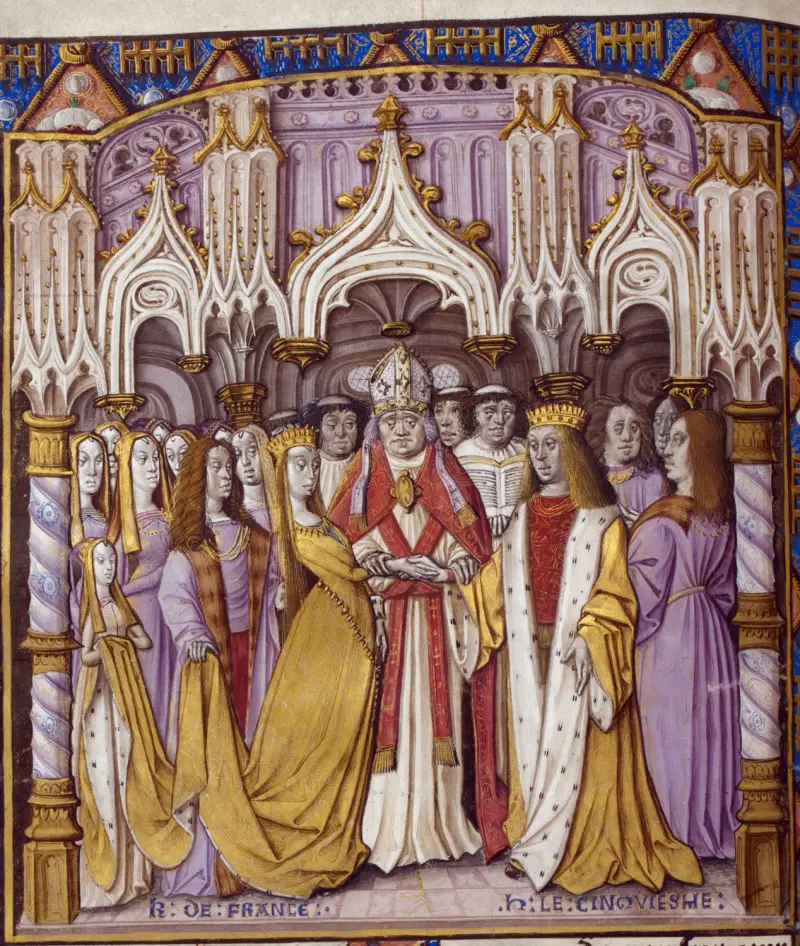
Marriage of Henry V and Catherine of Valois. Miniature from Jean Cartier’s manuscript “The Chronicle of Charles VII”, 1490 France, c. 1494 England. British Library
And then God was clearly angry with Henry V and did not allow him to properly enjoy the bonds of marriage. He fell ill and died on August 31, 1422 in France at the castle of Vincennes. His wife took his body to England, where on November 7 he was buried in Westminster Abbey. In memory of him, Catherine decorated Henry's grave with his beautiful sculpture. However, sculptural images of this king, famous for his victories, decorate many cathedrals in Britain.

Henry V's tomb in Westminster Abbey
The most important thing is that she managed to fulfill the main duty of any queen, that is, she managed to give birth to her husband’s son and heir, the future King Henry VI (1421–1471).
After the death of his father, he was elevated to the English throne on August 31, 1422, when he was only eight months old. And two months later, on October 21, 1422, another important event occurred: after the death of his grandfather Charles VI, he also became the legitimate king of France on the basis of the “Treaty of Troyes.”
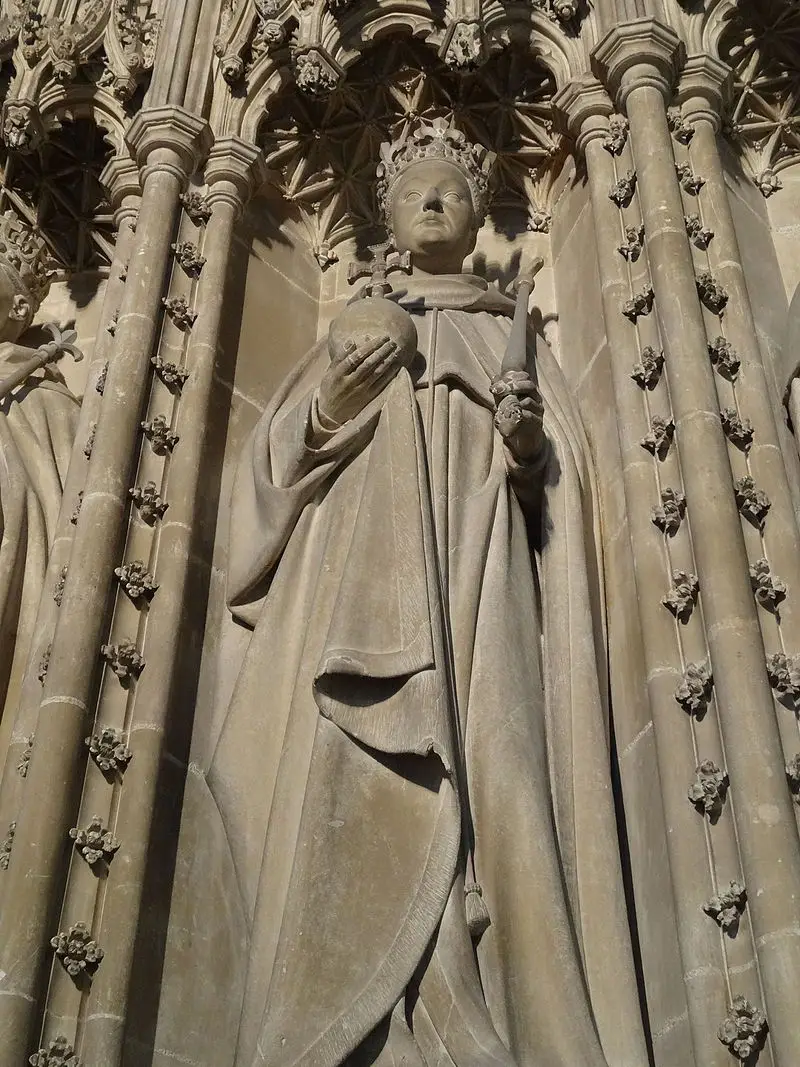
Statue of Henry V in Canterbury Cathedral. Photography by Jonathan Cardy
As for Catherine, in 1427–1429 she lived quietly and peacefully at court. She did not enjoy the special trust of the English nobility, but Parliament gave her vast lands, and they treated her with sufficient respect, although they noted her agility in relations with men and her “cheerful disposition.” She could enter into a new marriage only with the permission of the royal council and for a person equal to her in origin.
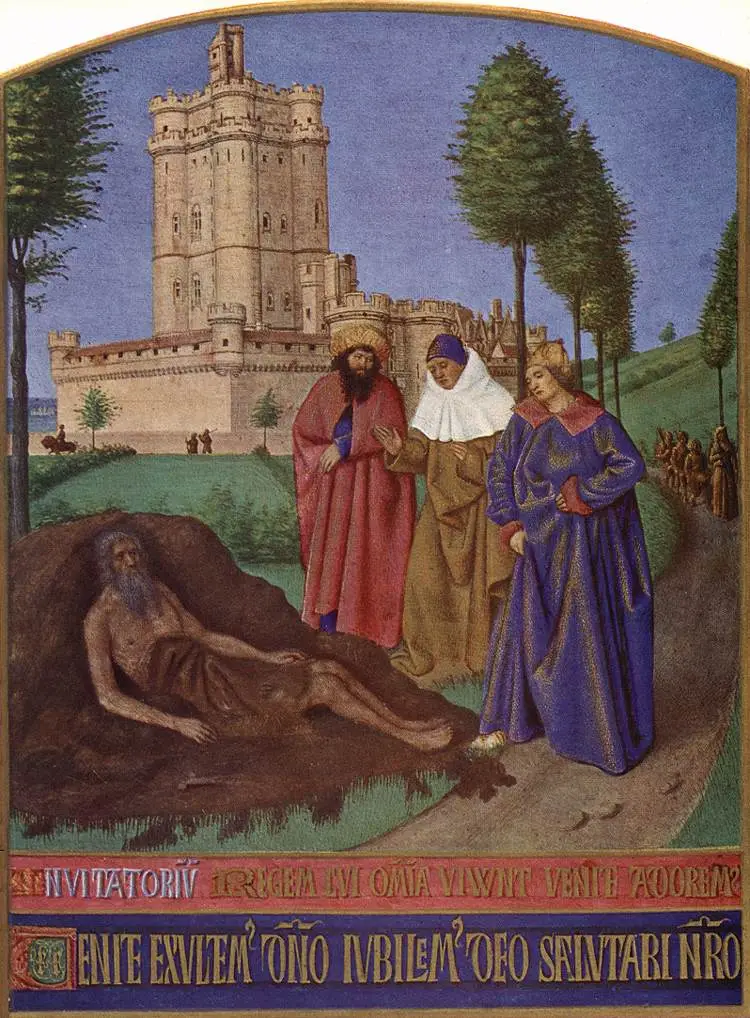
Vincennes Castle in miniature by Jean Fouquet (1452–1460). National Library of France, Paris
And it was then that an event happened that became a direct prologue to the War of the Scarlet and White Roses: the Dowager Queen found herself a lover! Who was he? Oh, this is exactly the most interesting thing!
Not even very noble, but still a Welsh nobleman, but a descendant of one of the most powerful rulers of the kingdom of Deheubarth of Wales - Rhys ap Gruffydd Owen Tudor.

Dinevur is the main castle of the kingdom of Deheubarth. Photography by Andrew Bohn
He pronounced his surname in the English manner - Tudor, in honor of his grandfather Tidir ap Goronwy, and so it turned out that he became the founder of this surname in England.
The circumstances of the Queen Mother's acquaintance with Owen Tudor are shrouded in darkness. The marriage with him was concluded somewhere in 1428 and 1432, but during the queen’s lifetime it was kept secret and was announced only after her death.
From this marriage children were born, quite a lot: Thomas Tudor (1429–1502), who became a monk, Edmund and Jasper, and daughters Tacinda Tudor (1425–1469), Margaret, who became a nun, and Catherine, who died in early childhood .
Edmund Tudor subsequently took Margaret Beaufort of the Beaufort family as his wife. He died of the plague in 1456, but managed to give birth to a son, named Henry.
And it is precisely this son of Edmund and Margaret who will become the future king of England - Henry VII.
So, in a completely incredible way, the French princess, who belonged to the Valois family, became the ancestor of the new royal dynasty of the Tudors, and being the wife of a king from the Lancaster family, whose emblem was... a scarlet rose!
To be continued ...
Information